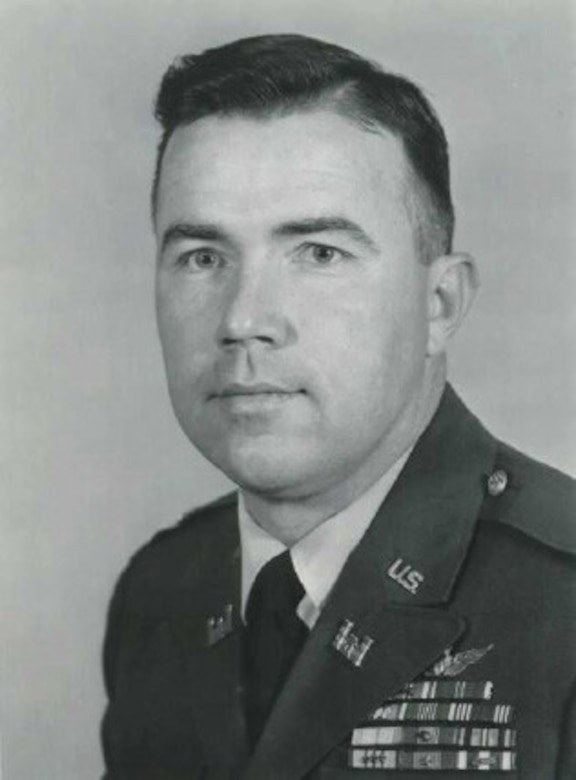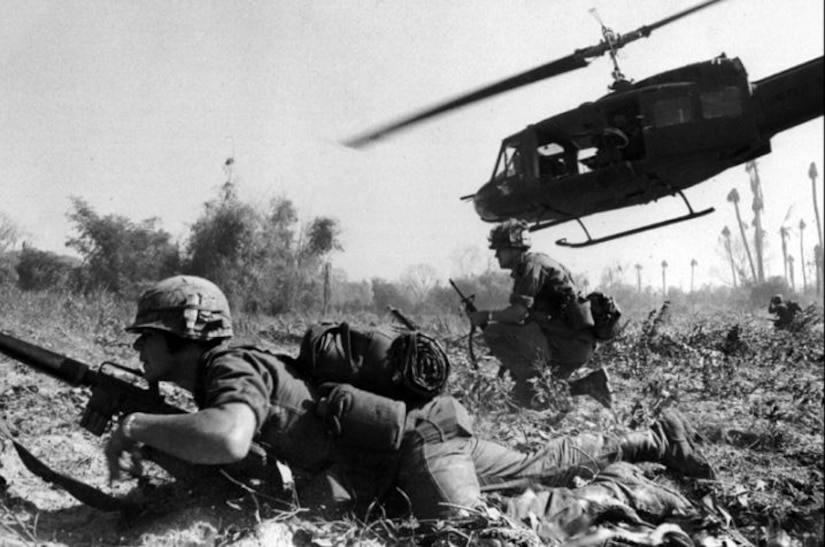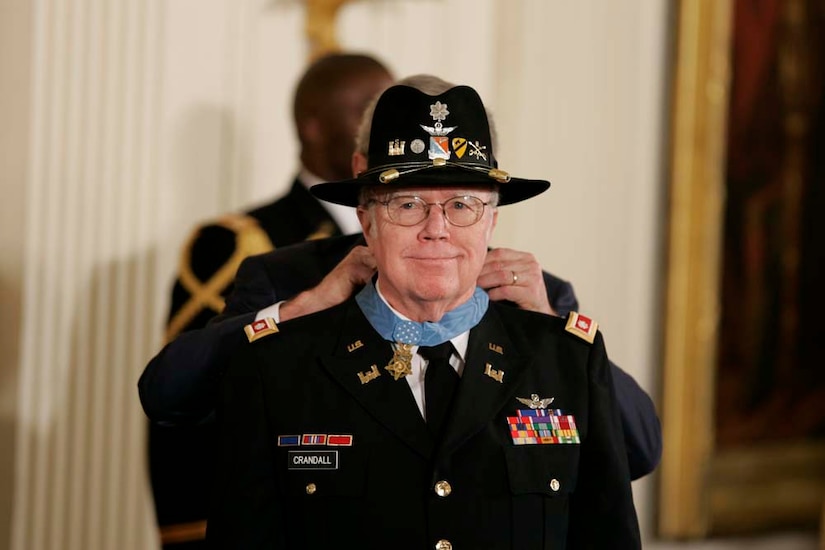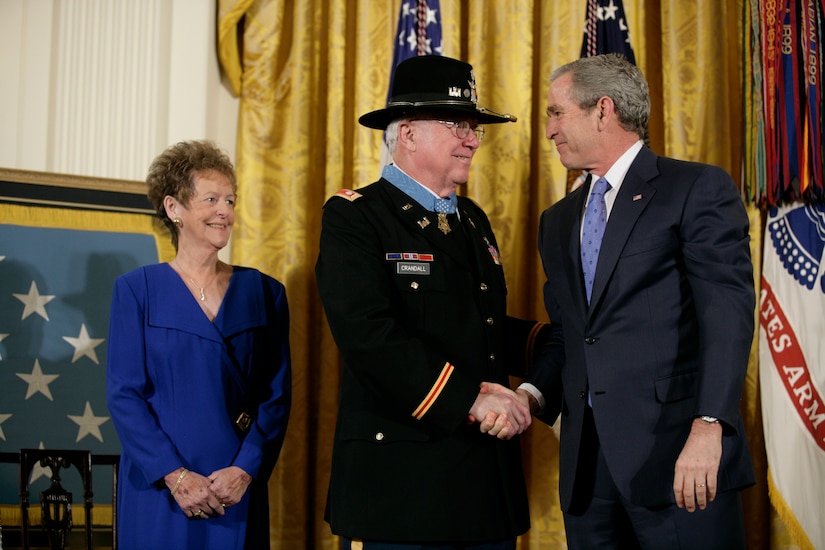Army Lt. Col. Bruce Crandall led more than 900 combat missions during two tours in Vietnam. His heroics were numerous, but it was his quick thinking during an aborted mission in 1965 that led him to save the lives of dozens of soldiers — something for which, four decades later, he earned the Medal of Honor.
Crandall was born on Feb. 17, 1933, in Olympia, Washington. He grew up like many boys his age, enjoying the game of baseball, and playing it well enough to become a high school All-American.
Crandall had dreams of being drafted by the New York Yankees, but instead, he was drafted by the Army in 1953. He went to aviation school and received his commission as an officer a year later.

Logging Miles
For roughly the first decade of his military career, Crandall’s job was mapping. He flew fixed-wing aircraft for topographical studies in Alaska, then headed to Libya, his first overseas assignment, for two years to help map the desert as an instructor and unit test pilot.
In 1956, Crandall married his wife, Arlene. They went on to have three boys.
As they built their family, Crandall built his resume. For a while, he was based out of Panama and Costa Rica, where he flew thousands of miles to chart remote mountains and jungles in Central and South America. He then helped develop air-assault tactics as a platoon commander while assigned to the 11th Air Assault Division.
In 1963, Crandall reported to Fort Benning, Georgia, to help lead a new air cavalry unit. He was the liaison for the 18th Airborne Corps in the Dominican Republic Expeditionary Force in early 1965 before he left to be a commanding officer on his first deployment to Vietnam.

Never Giving Up
Once arriving in-country, then-Maj. Crandall took charge of the 229th Assault Helicopter Battalion, the first major division operation of airmobile troops. He was well-respected by his soldiers, who gave him the nickname “Old Snake” — derived from his call sign, which was Ancient Serpent 6.
On Nov. 14, 1965, Crandall’s flight of 16 helicopters took troops on a search-and-destroy mission from an area called Plei Me to Landing Zone X-Ray, a remote spot in the Ia Drang Valley.
On his fifth trip into the valley, the enemy had targeted the site. As Crandall and eight other unarmed helicopters landed to drop off troops, they came under such intense enemy fire that the ground commander ordered the other helicopters to abort the mission.
As Crandall flew back to his base of operations, he realized that the men who were now surrounded at Landing Zone X-Ray desperately needed more ammunition than they had. So he took it upon himself to help: He adjusted his base of operations to Artillery Firebase Falcon, which was closer to the besieged site. Then he gathered volunteers to help him deliver ammunition to the trapped soldiers and evacuate the wounded. It wasn’t his mission, but he couldn’t stand by while the men on the ground were suffering.

Despite the heavy enemy fire, Crandall and another helicopter piloted by Maj. Ed Freeman, flew back to Landing Zone X-Ray, delivered much-needed ammunition and began loading the chopper with seriously wounded soldiers. Crandall did that flight 21 more times throughout the rest of the day and into the evening, only stopping once. He knew that he had done all he could for the battalion on the ground.
Crandall’s decision also offered a necessary morale boost at a pivotal time. The pilots around him saw what he was doing and were inspired to land their own aircraft to help. Conversely, the soldiers on the ground realized they weren’t alone in the fight: They had more supplies coming and a team to evacuate their wounded.
Crandall and Freeman were credited with evacuating about 70 wounded soldiers that day. Both men earned Distinguished Service Crosses for their actions.

A Distinguished Career
Crandall continued serving heroically in Vietnam. In January 1966, he was commended for rescuing 12 wounded soldiers during a dense jungle operation. Crandall then went back to the states for a bit for more schooling, but he eventually redeployed to Vietnam to fly Huey gunships in support of the 1st Cavalry Division.
About four months into that second tour, Crandall’s helicopter went down. He suffered a broken back and other injuries that left him hospitalized for five months.
Once he recovered, he remained in the Army and earned a bachelor’s degree from the University of Nebraska in 1969. He hopped around to a few more duty stations before suffering a stroke, which ended his flying career.
Even then, he continued to serve in the Army in other capacities until he retired in 1977 as a lieutenant colonel. That same year, Crandall earned a master’s degree in public administration from Golden Gate University in San Francisco. He spent a few more years in California working for the local government before he and his family moved to Mesa, Arizona, to continue his government service as a civilian.

Around the turn of the century, a decades-long paperwork delay was finally pushed through that nominated Crandall and Freeman’s Distinguished Service Crosses be upgraded to Medals of Honor. But — having been known to always put his men before himself — when Crandall found out Freeman had also been nominated, he insisted that his own name be withdrawn. Records show he said that if only one of them could get the high honor, he wanted it to be his wingman.
So in 2001, Freeman received the Medal of Honor for his 1965 actions. Six years later, Crandall would finally receive the honor, too.
A High Honor … Finally
On Feb. 26, 2007, the Medal of Honor was placed around 74-year-old Crandall’s neck by President George W. Bush during a White House ceremony. Several of Crandall’s fellow soldiers were there to celebrate his achievements.
In the years since his retirement, Crandall has spoken to students and service members about his experiences. He helped consult for the 2002 Mel Gibson movie “We Were Soldiers,” which was about the Ia Drang Valley Battle. And, in 2004, he was inducted into the Army Aviation Hall of Fame.
Crandall and his wife now have several grandchildren and live back in their home state of Washington. To this day, the 87-year-old is still receiving praise for his distinguished Army career. In November, Crandall visited Joint Base Lewis McChord, Washington, for a building dedication in his honor. The 1-229th Assault Reconnaissance Battalion’s headquarters is now known as Crandall Hall.
